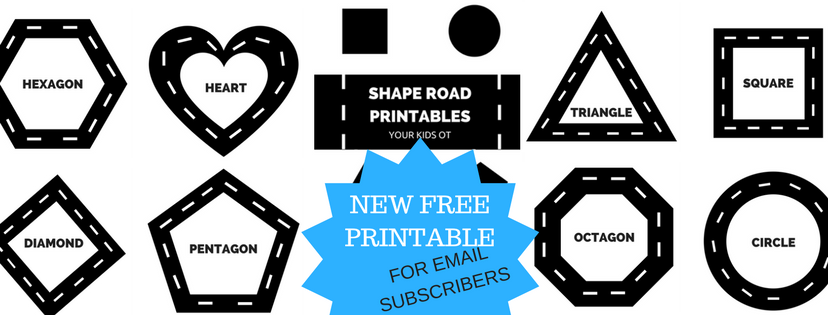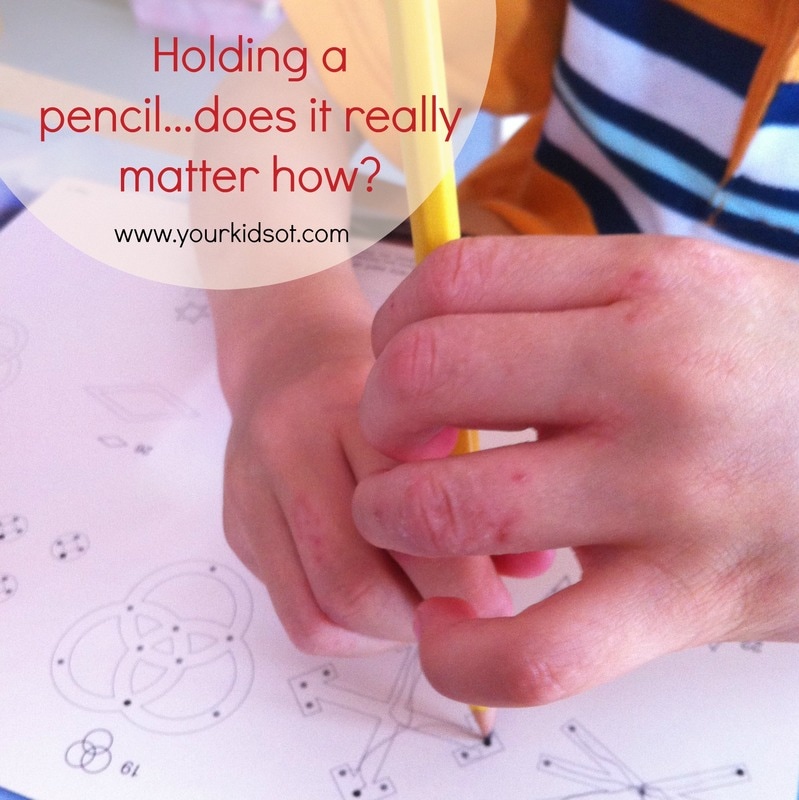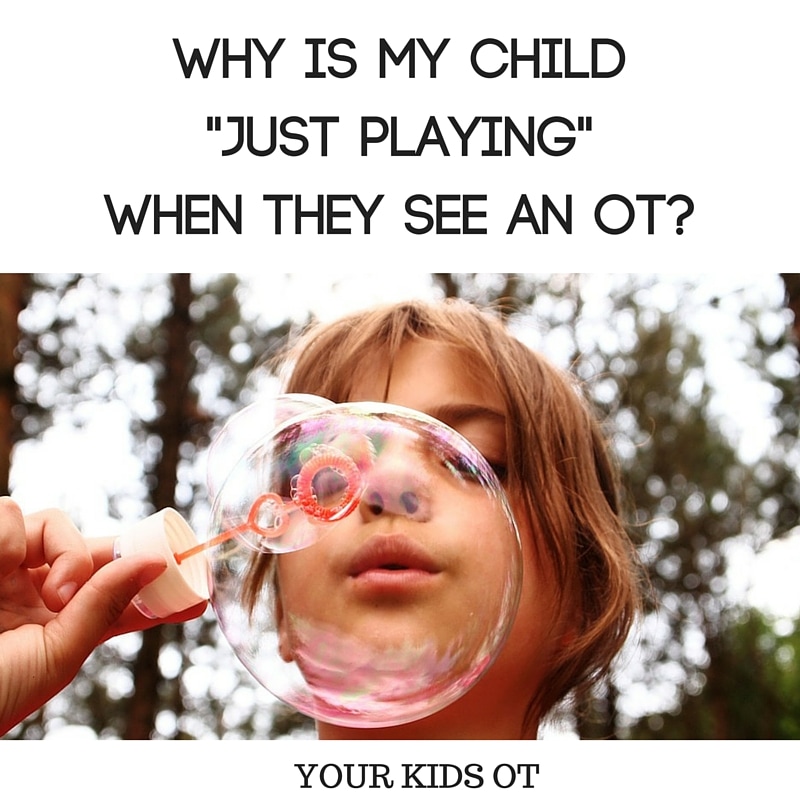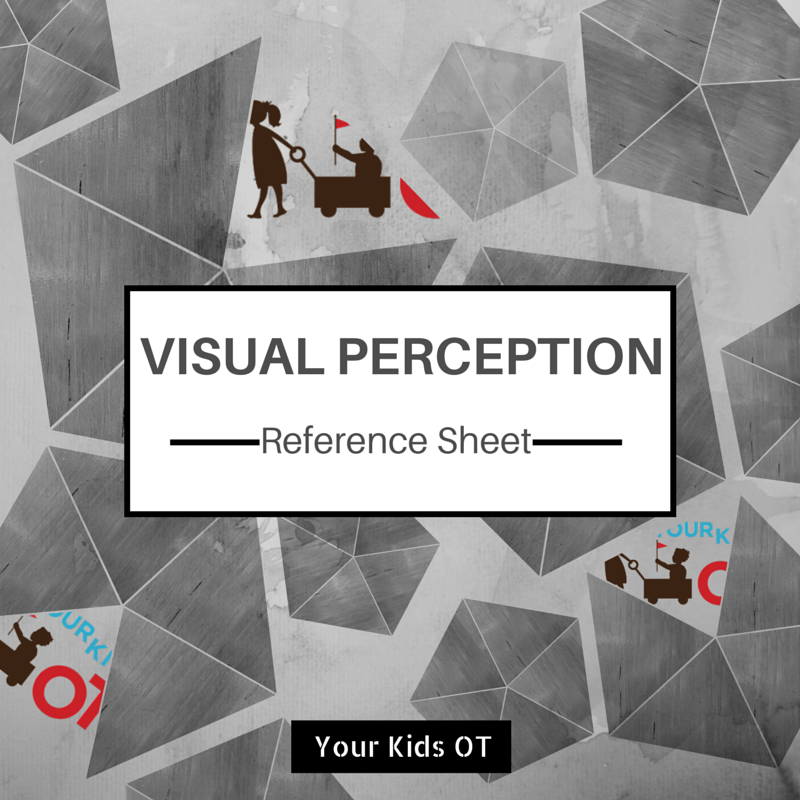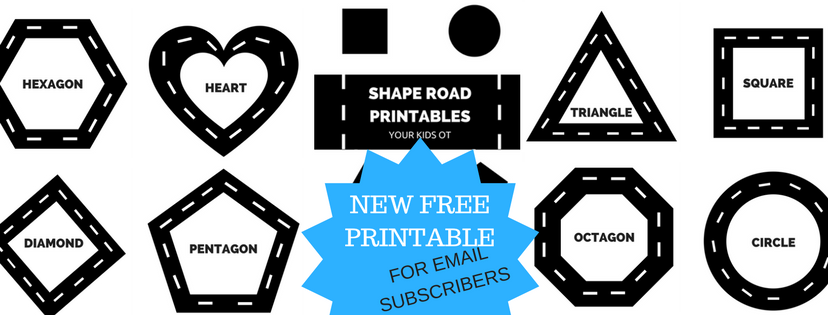|
Affiliate links are used throughout this website to promote products I love and recommend. I receive a commission if any purchases are made through these links. Please see my disclosure policy for more details. Ever been called "The pencil grip lady?"? Ever had parents say to you "I've got a shocking pencil grip but I've been alright with writing"? Ever been asked by friends at a kid's birthday party about how their child holds the pencil? Ever had friends say, "Can you check my pencil grip"? Ever have your own kids correct YOUR pencil grip? What's the big deal? Is it really important how our kids hold the pencil? Pencil grasps have been an ongoing discussion with teachers, parents and therapists. This article will be of particular interest to teachers and therapists. Some say pencil grasp doesn't matter. Some insist on change. Our children develop so differently. Benbow (2006)* tells us that boys have a tendency to develop their fine motor skills more slowly than girls and may have great difficulty managing writing tools; whilst girls may begin "writing" when they are as young as 2 1/2 years and may adopt pencil grasps that are inefficient or harmful as they pursue an early fascination with letter formation. Benbow also tells adults that we should not assume that children will know the best way to hold a pencil or that they will acquire the ability through incidental experience. Some studies have indicated that how a child grasps a pencil does NOT have significant influence on handwriting performance, however children WITH poor handwriting use significantly less mature pencil grasp patterns than children with good handwriting. ** There is also much discussion in the literature about dynamic (mature) grasps being suggested as the best grasp for writing when compared with static (immature) grasps. *** SO WHAT DOES THIS ALL MEAN? PENCIL GRASP AND HANDWRITING Pencil grasp is just ONE aspect of handwriting that occupational therapists consider. There is a developmental progression that is expected that children work through in their early years. Grasp patterns develop through play and experiences that children have interacting with their environment and objects they find in their environment. Read more about the developmental progression of pencil grasp here. Evaluation of Pencil Grasp. When looking at a child's pencil grasp, there are a number things that occupational therapists consider.
Defining Pencil Grasp. What makes it good? Functional? Efficient? Static? Dynamic? For efficient pencil control, OTs have for a long time looked for a dynamic pencil grasp (see photo below). The dynamic pencil grasp involves the thumb opposed to the index and third fingers with all three fingers position in a tripod on the pencil; creating an open web space (the nice circle made by the thumb and index finger) with the fourth and fifth fingers stabilized against the writing surface.*** It is the preferred grasp for writing speed, control and letter formation with movement of the pencil being controlled by the first three fingers (thumb, index and third fingers). **** This grasp is described as efficient, functional and dynamic. HOWEVER, this is not the only grasp which can be described in this way. Let's look at some definitions. FUNCTIONAL: A functional pencil grasp is any grasp that produces output on the paper whether that is scribble for a toddler, legible or messy handwriting for a school age child or adult. Whilst functional, this grasp may (or may) may not lead to fatigue, pain, slow writing speed or poor endurance. EFFICIENT: An efficient grasp is any grasp that produces writing on the page which is legible and was completed within a reasonable time frame. It enables the writer to produce a reasonable quantity of work without pain or fatigue. DYNAMIC: A mature pencil grasp where pencil control comes from movement of the thumb, index and third fingers whilst the fourth and fifth fingers are tucked into the palm and stabilized on the writing surface. STATIC: An immature pencil grasp where pencil control comes from the wrist, elbow or shoulder so that the hand moves as one unit. TRIPOD: A grasp where the pencil is held with three fingers touching the pencil (thumb, index and third fingers). QUADRUPOD: A grasp where the pencil is held with four fingers touching the pencil (thumb, index, third and fourth fingers). LATERAL: A grasp where the thumb lies adducted to the side of the index finger or crosses over the pencil and the movement of the pencil comes from the index and middle fingers predominantly (without the thumb's assistance). Which grasp should we teach? As occupational therapists we are primarily concerned with helping a child achieve a functional and efficient pencil grasp. This has been seen in recent literature as being achieved through dynamic movement of the fingers which can be seen in 4 differing grasps. These grasps are the dynamic tripod grasp, dynamic quadrupod grasp, lateral tripod and lateral (thumb) quadrupod. *** Schwellenus et al (2012) found that neither speed nor legibility of writing was affected by these grasp patterns. These authors continue to recommend that the dynamic tripod grasp should be taught to children when commencing writing. If a child has difficulties with writing then the grasp pattern should be observed and if it was one of these grasps mentioned then the therapist should look at other areas of handwriting remediation. Just a side note from my personal experience as an occupational therapist. There are also many children who may hold the pencil using the grasps described in this section (and seen in the photo below), however it is also important to observe where pencil control comes from. Does the child hold these fingers rigidly and move their hand at the wrist, elbow or shoulder? In which case these grasps are no longer dynamic but static and child demonstrates some difficult with separation of the two sides of the hand (read more about that here). THIS month is all about PENCIL GRASPS at Your Kids OT! I have more to share with you about inefficient and adaptive grasps; and a fun easy way to practice applying the "right" pencil pressure. Can't wait?!
I'm looking forward to seeing some wonderful creative ways to address pencil grasp and pencil control! What is your favourite way to encourage a dynamic, functional and efficient pencil grasp?
References: * Benbow, M. (2006). Principles and Practices of Teaching Handwriting. In Hand Function in the Child Foundations for Remediation (pp. 319-342). Mosby Elsevier. ** Pollock, N., Lockhart, J., Blowes, B., Semple, K., Webster, M., & Farhat, L. et al. (2009). Handwriting Assessment Protocol (2nd ed.). McMaster University. *** Schwellnus, H., Carnahan, H., Kushki, A., Polatajko, H., Missiuna, C., & Chau, T. (2012). Effect of pencil grasp on the speed and legibility of handwriting after a 10-minute copy task in Grade 4 children. Australian Occupational Therapy Journal, 59(3), 180-187. http://dx.doi.org/10.1111/j.1440-1630.2012.01014.x **** Elliott, J. M & Connolly, K. J. (1984). A classification of manipulative hand movements. Developmental Medicine and Child Neurology, 26 (3), 283-296. You may also like:
Comments are closed.
|
AuthorHi, I'm Cindy and I am an Occupational Therapist. I enjoy working creatively with children to see them reach their potential. Read more about me here. SEARCH THIS SITE
Archives
June 2024
Categories
All
Popular Posts |
Join the YKOT e-newsletter!
Subscribe to get our latest content by email and receive
the SHAPE ROADS PRINTABLE NOW!

Success! Now check your email to confirm your subscription and receive your free printable!
Join our Mailing List!
Subscribe to get our latest content by email and receive
the SHAPE ROADS PRINTABLE NOW as a thankyou!

Success! Now check your email to confirm your subscription and receive your free printable!
Disclaimer: The information on this site is general in nature and should be used for educational and entertainment purposes. The activities are safe for most children, however, you should consult an Occupational Therapist or health professional to address specific movement, sensory or other medical conditions. This blog does not replace formal therapeutic professional advice given by a health professional or medical practitioner. Reviews and endorsements of products will only be made based on my expertise and personal opinion; and deemed worthy of such endorsement. The opinions shared in sponsored content will always be my own and not that of the advertising company or brand. Content, advertising space or posts will be clearly identified if paid, affiliated or sponsored. Affiliate links may be found throughout this website in advertising. This means that if you follow through with a purchase from these links, Your Kids OT will receive a percentage of the sale. Your Kids OT undertakes to meet the requirements of the "Social Media Policy" as published by Australian Health Practitioner Regulation Agency (AHPRA). Further information about this policy can be found here.
Find meFollow me |
About me
AuthorHi, I'm Cindy and I am an Occupational Therapist. I enjoy working creatively with children to see them reach their potential. Read more about me here. |
Copyright © 2017 Your Kid OT

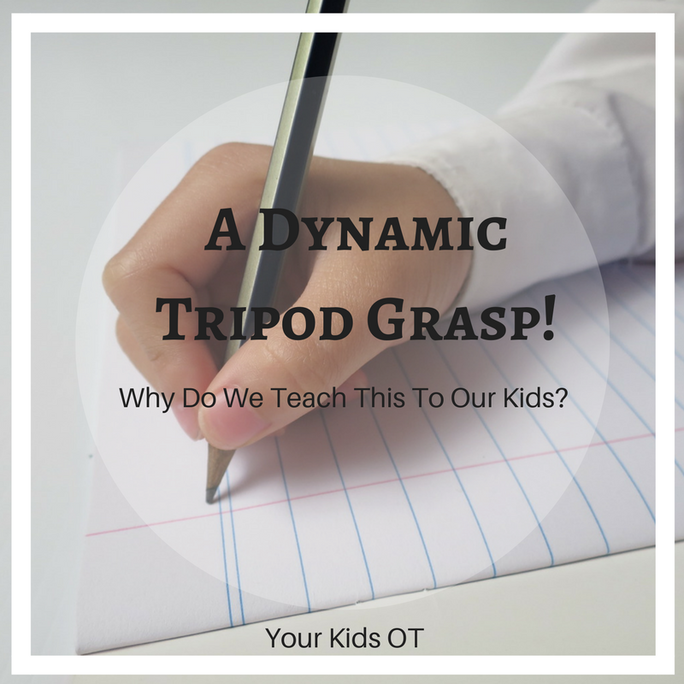
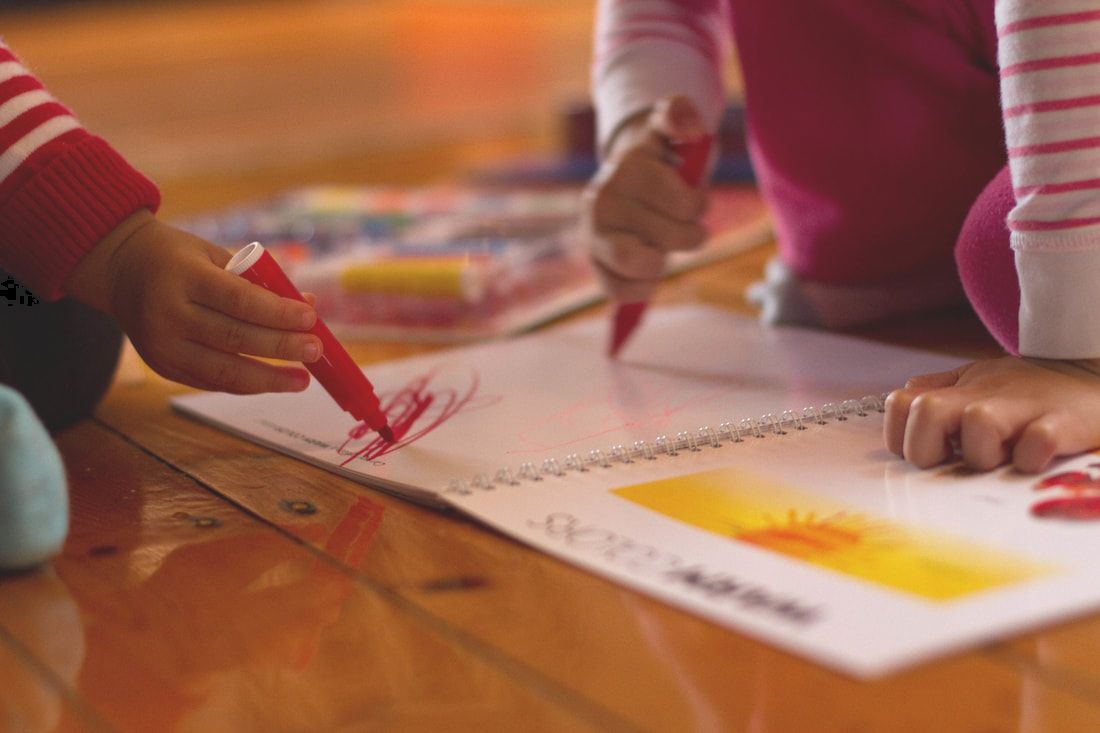
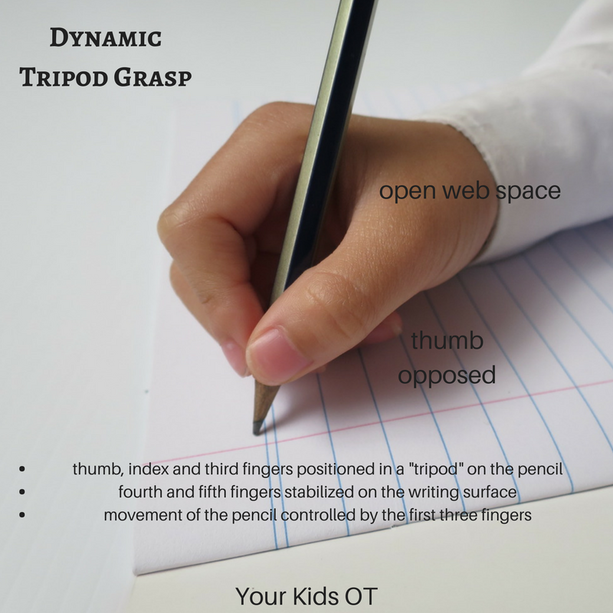
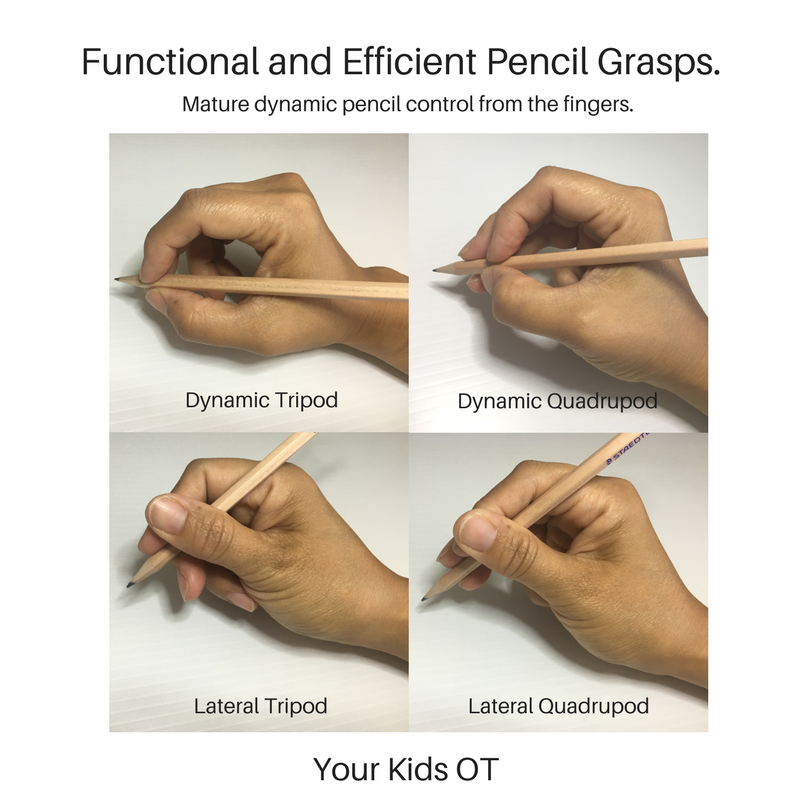


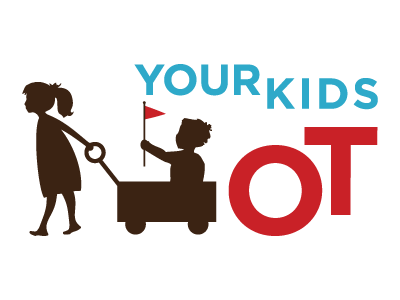
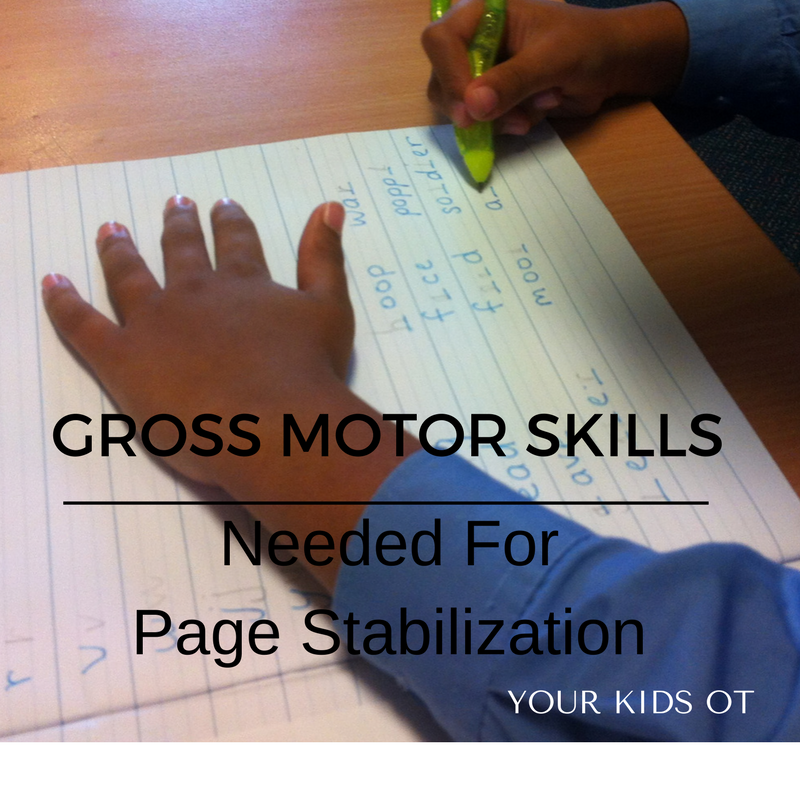
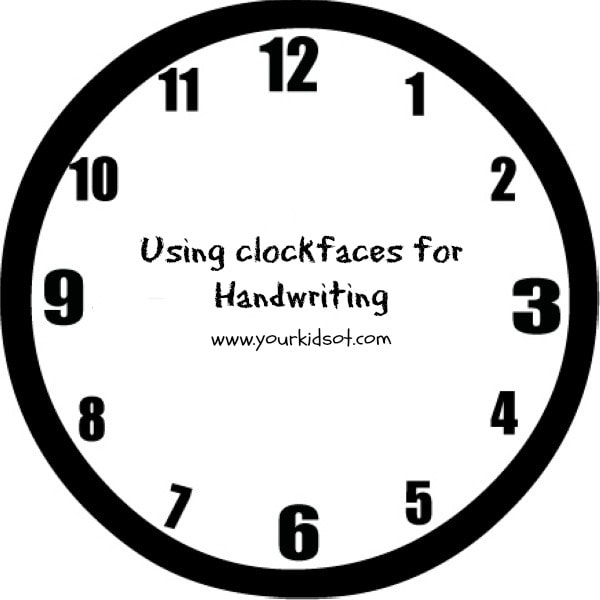
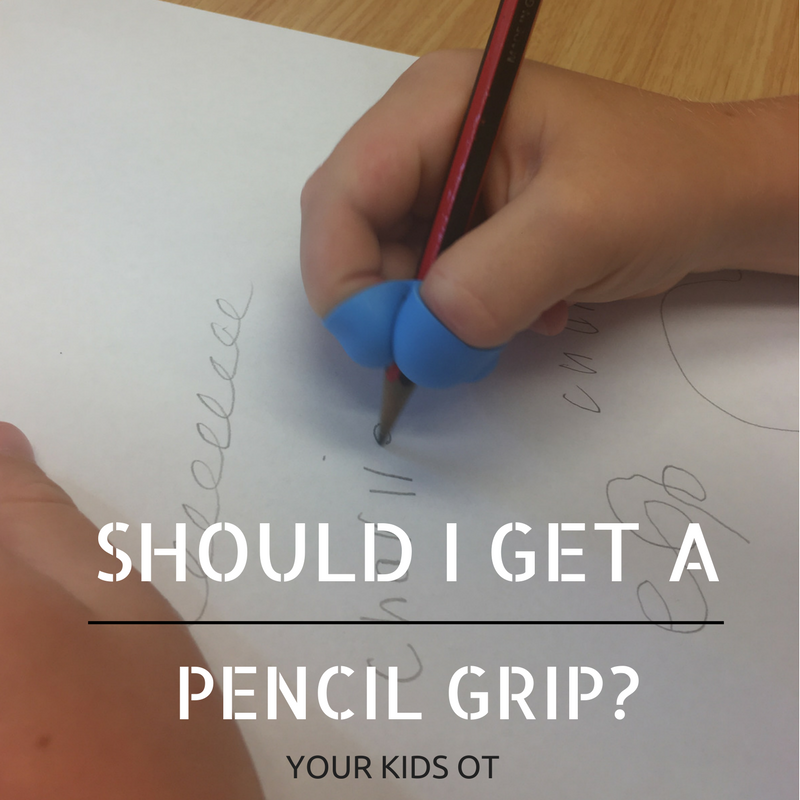
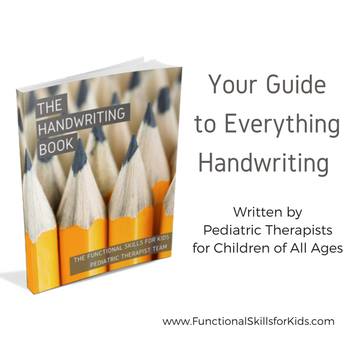

 RSS Feed
RSS Feed
